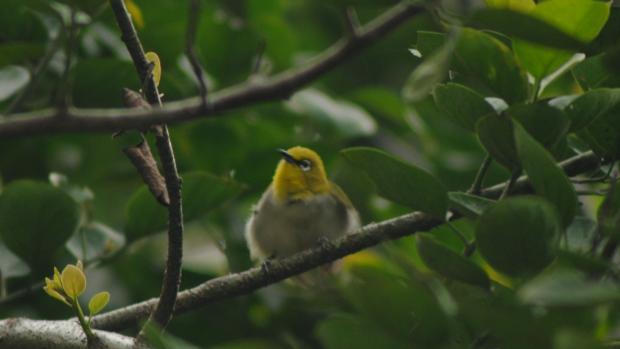
Photo : Purabi Deshpande / Research Matters
Any Indian wildlife enthusiast who has visited the pristine forests of Sri Lanka, is sure to notice that the southern parts of India and the emerald island nation share a lot of similarities in the wildlife they house. From bigger mammals like the elephants to tiny insects like butterflies, a lot of similar species can be spotted. So how could these species, so closely related, exist in two separate masses of land across a narrow stretch of sea?
Researchers have pondered on this question earlier and have come up with many theories. One such theory states that during the Pleistocene glaciations, or the most recent ice age, the Palk Strait connecting the two land masses was dry and prominent. This allowed the movement of flora and fauna, and hence the genetic material between them. If so, is the Sri Lankan wildlife a mere subset of the Indian wildlife? The high rate of occurrence of endemic species on the island doesn’t agree with this conclusion.
After Darwin’s initial theory of evolution, many modes through which new species can be formed, were described in theory. “Speciation predominantly takes place as a result of partitioning of the ancestral population due to a geographic barrier which could be a mountain, river or a valley. This mode is called allopatric speciation. On the other hand, in sympatric speciation, new species evolve from a single ancestral population while inhabiting the same geographic region”, explains Ms. Nelum Wickramasinghe, a researcher from the University of Colombo.
In a recent study published in the journal PLoS One, researchers from the University of Colombo and the National Centre for Biological Sciences, Bangalore, have explored the question of how species could have originated and travelled between India and Sri Lanka. In their study, the researchers chose two species of small passerine birds, the Ceylon white-eye (Zosterops ceylonensis), which is endemic to Sri Lanka, and the Oriental white-eye (Zosterops palpebrosus), which is spread throughout most of India, Sri Lanka, Lakshadweep islands and other parts of the oriental region. “White-eyes have been able to diversify rapidly within a short time period and are referred to as a 'great speciator'. They are excellent dispersers and have also been able to colonize and establish many islands, showing high island endemism. Hence, it was chosen as the study species”, explains Ms. Wickramasinghe
It was suggested by Ripley, the famous ornithologist and wildlife conservationist, in 1949 that the white eyes from mainland India colonized Sri Lanka. The researchers explored three possibilities through which these two species would have come to exist in Sri Lanka. The first being that the species diverged through sympatric speciation. The second scenario being the one that Ripley suggested. And the third possibility being that the species colonized and evolved independently through separate ancestors.
To arrive at an answer, the researchers measured the various morphological features, also called the phenotype, of the captured birds. They collected blood samples from the birds for genetic analysis. And the results were as clear as day. Both the phenotypic and genetic analysis showed that the species were distinct from each other. The genetic information collected from these individuals also allowed the researchers to use modern phylogenetic tools which construct phylogenetic trees and test evolutionary relationships, to determine which species colonize the island nation first.
Through this study, the researchers showed that the endemic Ceylon white eye existed on the island before the more widely-spread Oriental white eye came in. “Our study also shows that not all Sri Lankan species are of Indian origin. For the longest of time, Sri Lankan fauna was considered to be a subset of South Indian fauna. However, recent research has been able to provide evidence for Sri Lanka's own endemism. This study adds one more species to the list of non-Indian species of Sri Lanka”, signs off Ms. Wickramasinghe.

![Inset: image of Snowflake yeast. Credit: Narayanasamy N, Bingham E, Fadero T, Ozan Bozdag G, Ratcliff WC, Yunker P, Thutupalli S. Metabolically-driven flows enable exponential growth in macroscopic multicellular yeast. bioRxiv [Preprint]. 2024 Jun 22:2024.06.19.599734. doi: 10.1101/2024.06.19.599734. PMID: 38948761; PMCID: PMC11213004. Yeast](/sites/researchmatters/files/styles/400px_wide/public/Snowfalke%20Yeast.jpg?itok=YZoahBjb)




